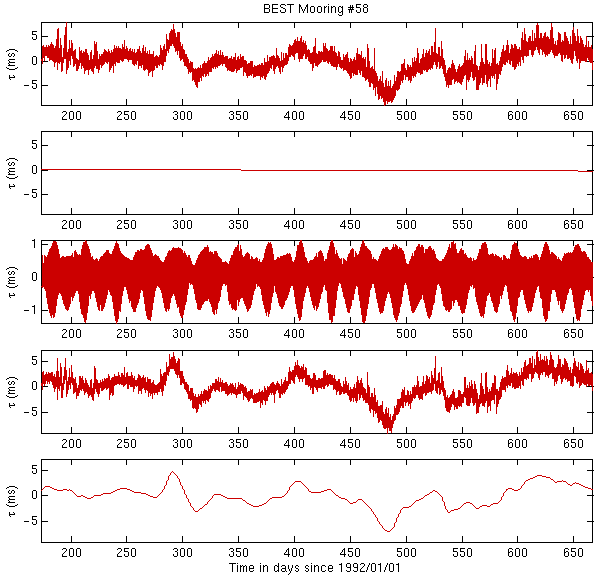

a) Raw IES timeseries data for SN 58 (the mean has been removed for clarity). Processed data samples are once per hour.
b) A linear trend is modeled and removed.
c) The barotropic tide (diurnal and semi-diurnal) is modeled and removed. Tides in the Cape Basin have a peak-to-trough amplitude of roughly 2 m, which translates to an amplitude of about 2.5 ms in tau (acoustic travel time). Note the change in scale on the y-axis.
d) The de-trended, de-tided data.
e) A lowpass filter is applied: in this case a second-order Butterworth filter with a cutoff at 72 hours (see Fig. 7b).